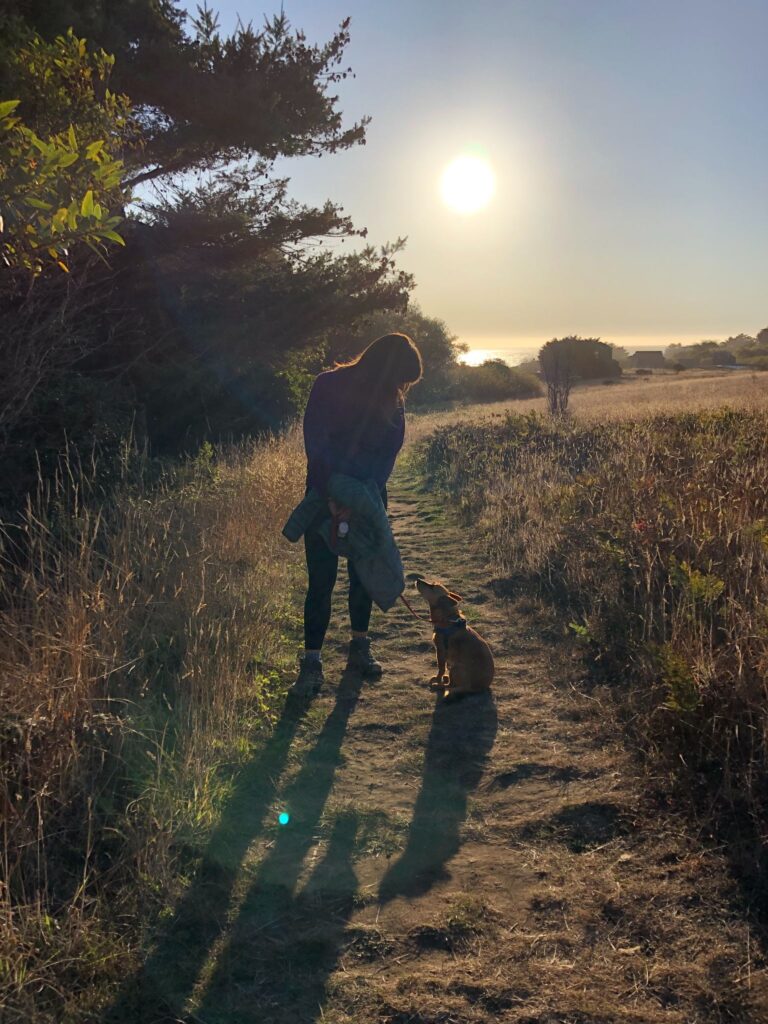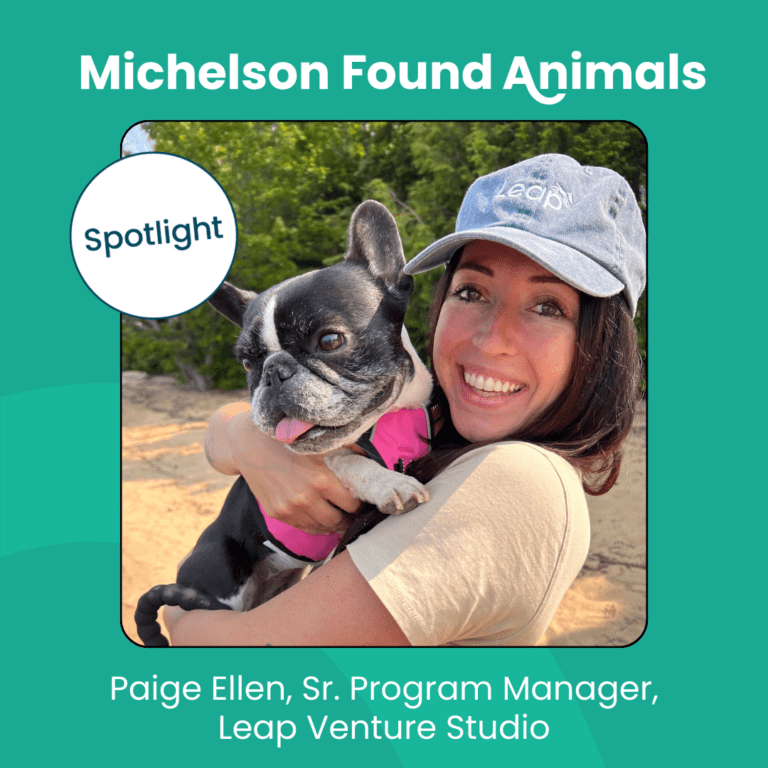Found Animals Spot Light: Becky Cyr and the Soul-Dog
By Siobhan Brier
After Becky Cyr graduated from college, she was living outside of Boston, and every day, on her way to get coffee, she walked past the studio of a stained glass artist. She became friends with the artist and later began walking his dog, Max. She calls Max her “gateway dog.”
So, when Becky moved to California, she started volunteering at the Burbank Animal Shelter. “I loved being around those animals,” she said, but, at the same time, the work opened her eyes to many of the difficult parts of the shelter system. She realized, for example, how reliant shelters are upon selfless volunteers.
During her undergraduate studies at Tufts University, she knew that she wanted to work in the nonprofit sector as soon as she was able. Her first nonprofit job after college was at an international mental health foundation in Boston, where she worked for over two years before moving to California.
That experience, combined with her newfound interest in animal sheltering and welfare, primed her for the career that she had had ever since 2012. When Becky saw the chance to work for Michelson Found Animals in their grants program, she jumped on it.
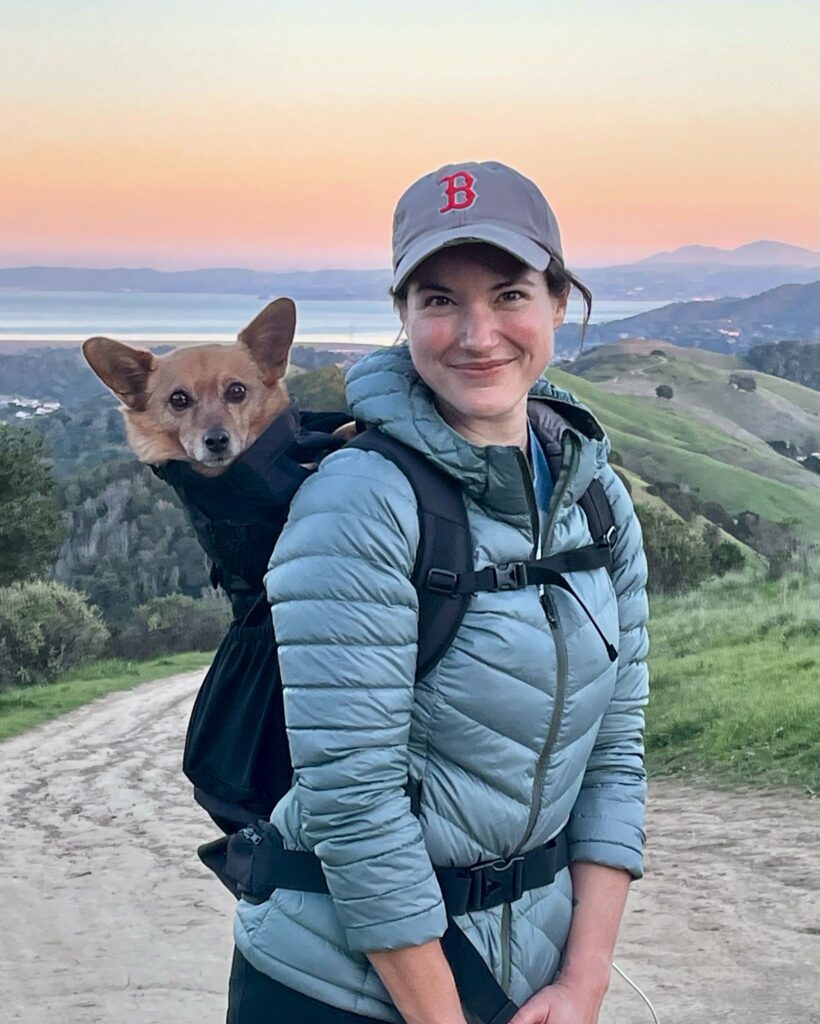
Becky Cyr
Michelson Prize & Grants
The Need for a Nonsurgical Animal Sterilization Method
Animals living on the street have been an issue for a long time.
For example, stray animals can cause environmental issues. Free-roaming animals also don’t tend to get the same level of care and attention that a domestic animal would get. Even with shelter volunteers working tirelessly to care for and house these animals, it can still sometimes not be enough to put a dent in the large populations of free-roaming animals.
Trap-neuter-return (TNR), which involves catching animals, spaying or neutering them, and releasing them back into the environment where they were found, presents a solution. The only issue is that TNR, as it works now, is labor-intensive and time-consuming. The animal must be caught, brought to a shelter, operated on by a vet, supported throughout recovery, and then either released or adopted.
The current (and worsening) vet shortage complicates the issue even further by making it difficult for animals to get a sterilization appointment. There are even animals who are already adopted but sit in the shelter waiting for a vet to become available so they can be neutered.
For these reasons and more, the animal welfare world has long recognized the need for a non-surgical sterilization method. But many labs simply didn’t have the funds and materials necessary to create new, safe technology that sterilizes animals. So Dr. Gary K. Michelson, the founder of Michelson Found Animals, decided to step in.
The Prize for Sterilization
To make a splash, in the fall of 2008, Michelson Found Animals announced that it would award a $25 million prize to the first entity that could provide the foundation with a low-cost, permanent, non-surgical sterilization method for cats and dogs. To support the research needed to develop a prize-contending product, the foundation also announced the creation of a $50 million pool of money that it would invest in researchers working toward that goal. Taken together, this $75 million initiative represents the Michelson Prize & Grants program. Since the program’s inception, they’ve awarded $19 million in grants to labs all over the world that have taken on the challenge of developing a nonsurgical sterilant for companion animals.
Becky started working on the Michelson Prize & Grants program in 2012 and has served as Program Manager for a decade.
As Program Manager, Becky likes to be involved in the grant process. Michelson didn’t simply announce the prize and then step away– Becky personally gets to know the people who are working on developing new and innovative technologies in the animal sterilization niche and follows their advancements closely. She has even been able to travel the world with her program’s grantees and scientific advisors, attending scientific conferences and presenting research findings to colleagues who are also working in this space.
Around the same time that she started working for Michelson, Becky rescued a small little dog who would go on to impact her in a big way. She named him Gus.
Gustavo Barksdale

Becky described Gus, full name Gustavo Barksdale, as her “soul-dog.”
“He was the primary constant in my life for 10 years,” she said, “He saw me through several heartbreaks, accompanied me on hundreds of miles of hikes, and was the sweetest son, husband, roommate, and coworker you could ever hope to have.”
But falling in love with a rescue pup added a new sense of urgency to Becky’s work with Michelson.
“If the circumstances of Gus’s life had been just slightly different, we might never have met,” Becky explained. “If he had been taken to a kill shelter instead of scooped up by a rescue organization, my soul-dog might not have made it out alive. The healthy, adoptable animals that die in shelters every day are all someone’s potential soul-cats and soul-dogs.”
A Breakthrough
One of the people who received grants from Michelson, David Pépin, has recently had a quantum leap.
A new technology coming out of Pépin Laboratory sterilizes female cats with a single injection. The first trials of this genetic treatment have shown cats have no side effects from the injection.
This injection can be completely instrumental in changing the way we manage stray cats. With this new treatment in hand, a veterinarian could go to a shelter and, in just one day, safely sterilize every present female cat.
“David Pépin is our star grantee,” said Becky Cyr. “We’re working very closely with him to develop his technology.”
While the current injection is quite advanced, it still needs to go through multiple clinical trials and other processes before it can be approved by the FDA. So, we can safely assume that this technology won’t be on the market for another 5-7 years. But when that time comes, it will have a lasting and noticeable impact on the world of animal welfare as we know it.
This is, to put it briefly, an absolute game-changer.
Major advancements like these keep Becky finding daily motivation and inspiration in her work. “We owe it to [these animals],” she said, “to find a more accessible way to spay and neuter; to ensure that every animal born is born wanted and able to be adequately cared for.”
Gus’s Glass
When Becky’s gateway dog, Max, passed away, she was living in California. One day, she got a package from Boston. In it was a small paperweight, a glass orb. She called her friend, the stained glass artist, back in Boston, and he explained that when he made the orb, he had incorporated a swirl of Max’s ashes in it. He told her that he wanted her to always have that small part of the first dog she loved.
Gus passed away in September 2022 after a long life of being adored. Becky points out that Michelson played a large role in allowing her to share so much time with Gus during his lifetime. “Working at Found Animals – first in a dog-friendly office, and then as a permanently remote employee – made it possible for me to be with him for almost every moment of his life,” She said. “How many pet parents get to be in that lucky position?”
After Gus’s passing, Becky had him cremated and then flew to Boston to meet up with her friend, Dan Maher, the stained glass artist.
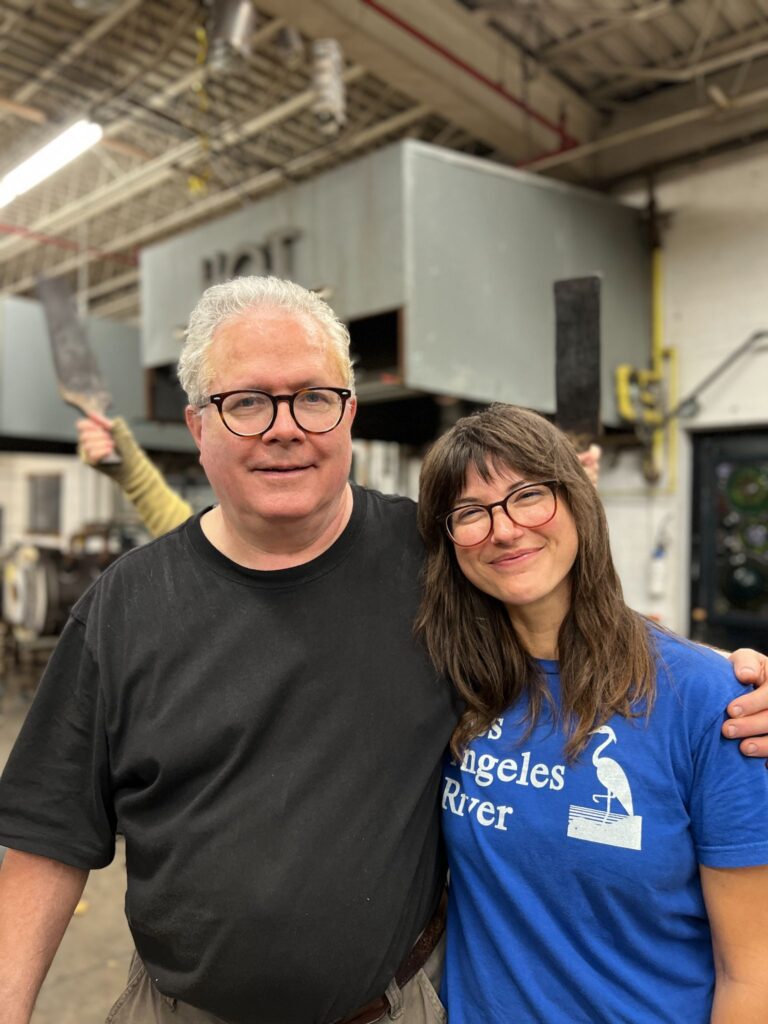
Dan used some of Gus’s ashes to create seven ethereally beautiful glass orbs, with Gus’s ashes floating inside in a swirl, like a soul. Becky gave four of these orbs to close friends and family who were important fixtures in Gus’s life and kept three for herself.
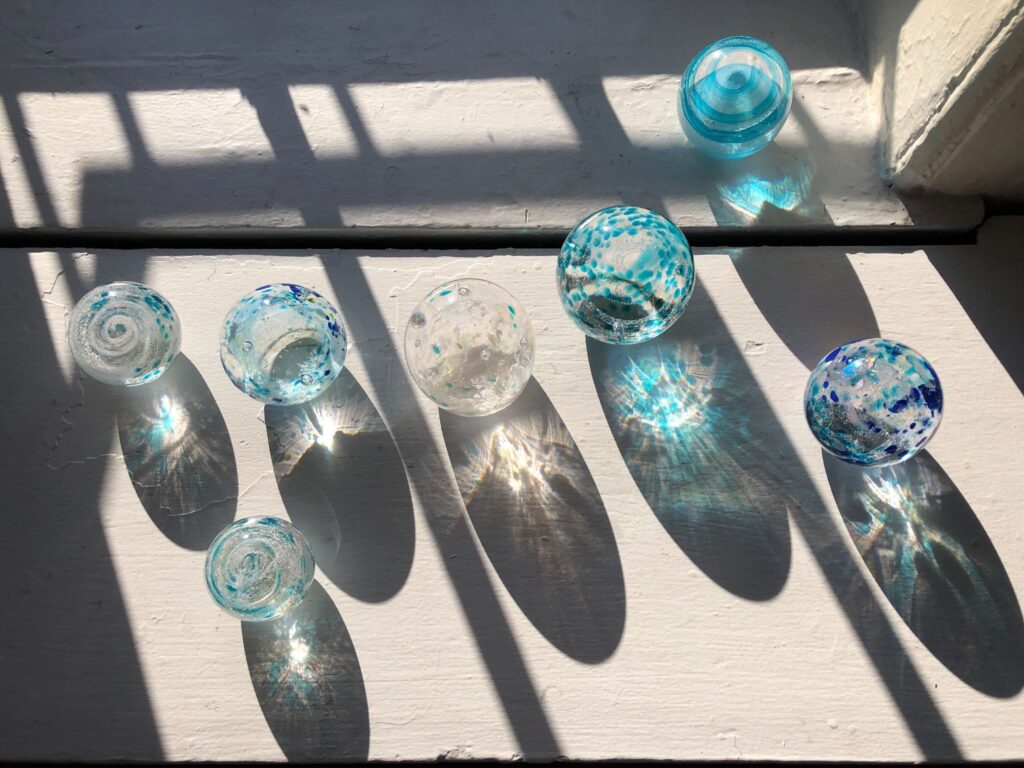
The glass orbs serve as a visual reminder of the startling impact an animal can have on our lives and why the well-being of animals is so important. They remind us why the time, the grants, the focus, the late nights, and the tears are not misplaced, so long as they help improve the life of even one animal.
On behalf of Michelson Found Animals, thank you, Becky Cyr, for the selfless work you do for animals, and thank you to Gus as well for reminding us why we do the work we do.
